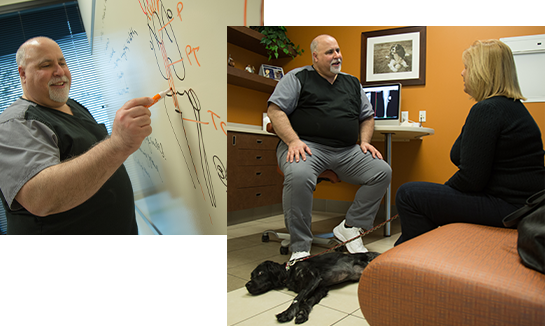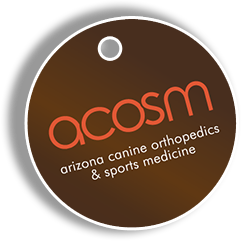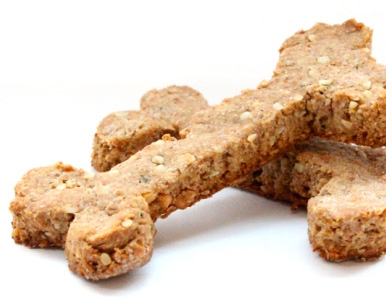Ruptured CrCL
Shimada, Masakazu et al. “Long-term outcome and progression of osteoarthritis in uncomplicated cases of cranial cruciate ligament rupture treated by tibial plateau leveling osteotomy in dogs.” The Journal of veterinary medical science vol. 82,7 (2020): 908-916. doi:10.1292/jvms.19-0613
Key Point: Significantly lower osteoarthritis for partial tear and meniscus intact compared to those with complete CCLR
By far the most common surgical disease in veterinary orthopedics is a ruptured cranial cruciate ligament (CCL) in the dog, which is analogous to the human anterior cruciate ligament (ACL). This ligament is the main stabilizer of the knee, and without it, the knee become unstable, or loose. This looseness leads to pain, limping, progressive osteoarthritis, and ultimately a reduced quality of life. Unfortunately, the root cause of the ligament degeneration is not known, but extensive research has been performed to determine the optimal approach to diagnosing and treating this disease.
Our goals at Arizona Canine Orthopedics and Sports Medicine are dependent on numerous factors including age of the dog, breed, lifestyle (including police and agility dogs), bone anatomy, and owner expectations. There is no one-size-fits-all, but the ultimate goal is to treat any underlying joint pathology (disease) and stabilize the knee – turning that ‘loose’ knee back to a ‘tight’ one. One thing we are extremely conscientious about is the health and integrity of the cranial cruciate ligament and the menisci. The menisci’s job are to cushion the joint, and distribute force across the knee, allowing comfortable daily activity. When injured (as you or a family member have encountered) it can be very painful, and because most meniscal injuries are tears that cannot be repaired, this leads to more advanced osteoarthritis. If not treated appropriately pain will persist.
Briefly, there is variation in how this disease is treated when it comes to the meniscus and CCL. The cranial cruciate ruptures along a spectrum, not all or nothing – think of slowly fraying length of twine! Additionally, the treatment of the meniscus has changed over time. Originally a procedure to cut (release) the meniscus and prevent it from damage after surgery, was taught, but leads to osteoarthritis, the same as if it was torn. This has evolved to some surgeons utilizing techniques to not release the meniscus when it is healthy.
In 2020, Dr. Shimada and their colleagues At Nippon Veterinary and Life Science University in Tokyo evaluated these different treatment options. They looked at long-term outcomes (3 years) in and progression of osteoarthritis after a tibial plateau leveling osteotomy (TPLO) surgery in dogs. Groups were classified by the degree of CCL damage and presence or absence of medial meniscus damage during surgery. Weight-bearing function was assessed objectively, and osteoarthritis progression was assessed via the radiographic osteoarthritis score preoperatively and continually up to 3 years postoperatively. Although there are limitations to the study, Dr. Shimada showed two things of important:
- All groups of dogs benefited from the procedure at 6 months post-operatively and was sustained throughout the 3-year study period.
- Severe progression of osteoarthritis was seen in the groups that had a complete CCL rupture and meniscal tears than compared to groups with partial tears and healthy menisci. Although arthritis progressed over time after TPLO, the progression was more gradual in stifles with partial tears than in those with complete rupture
This tells us at Arizona Canine Orthopedics and Sports Medicine that 1) all dogs regardless of the spectrum of disease inside the joint will benefit from TPLO surgery. Keeping the menisus function intact (rather than releasing it), and keeping the CCL intact (if it is providing stability) is beneficial for function and decreasing development of arthritis. Furthermore, if we operate SOONER than LATER we can expect better outcomes both in function but also in arthritis.
Please find out further information here: CrCL Tear
Brian Petrovsky, DVM
Practice Limited to Surgery

Get Informed
Schedule a Consultation
Make no mistake, all surgical procedures are serious. Get the information you need and know your options. Then make an informed decision. Like any service, not all veterinary services are equal. Call to schedule or ask questions.
Call our clinic at 480.998.5999
or Email us.
FAQ
What Makes ACOSM Stand Out?
We pride ourselves on doing things differently. We insist on providing premier service to our patients and their caregivers. There's a saying, "Price is what you pay; value is what you get." At ACOSM, delivering on value is our mission.
We're proud of our experience, skill, and outcomes; it puts us in a category of one, which means you'll experience things with us not promised by any other veterinarian in AZ.
Dog Blog
Distal Femoral Osteotomy for Comprehensive Treatment of Medial Patella Luxation
Three-Dimensional Printed Patient Specific Guides for Acute Correction of Deformities
Comparison of Arthroscopy and Arthrotomy for Diagnosis of Medial Meniscal Pathology
Second Look Arthroscopic Findings After Tibial Plateau Leveling Osteotomy
Resources
New Patient Registration Forms
- New Patient Packet

- New Patient Packet - Online
 New online form!
New online form! - Patient Referral Form

- Patient Referral Form - Online


